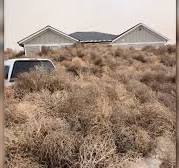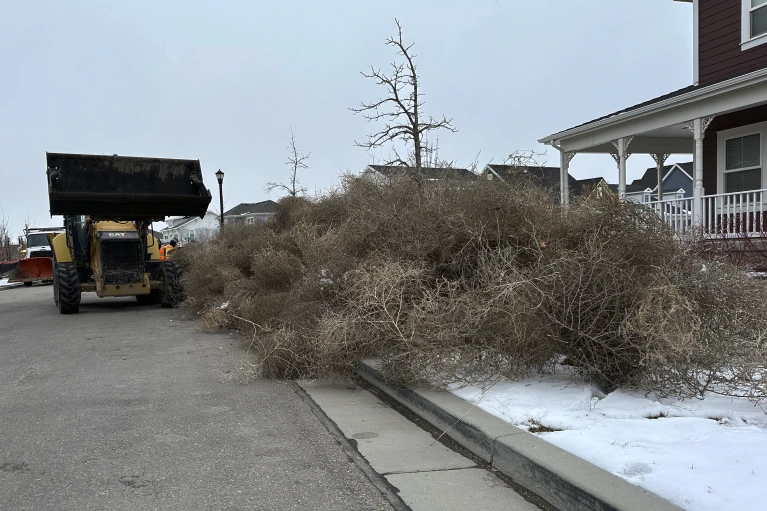Old west movie renewed
Remember the old West ghost town? The scorching heat and the wind and those tumbleweeds that seem to signal not even the ghosts were hanging around this place. Well, its 2024 suburbia, but the tumbleweeds are back stronger than ever. Across Utah and Nevada the Russian invader was proving pretty durable to desert, snow and even lawn mowers. Saturday’s tumbleweed takeover is not isolated, but it’s also not a fiendish plan by the invasive Russian thistle to conquer the western United States. Instead, the occurrences are due to combinations of seasonal wet and dry weather, the death cycle of the plants and strong gusts that propel them. Native to southeastern Russia and western Siberia, the Russian thistle and other plants like it are believed to have been introduced into the U.S. by Russian immigrants as a contaminant in flax seed. They start out as live, green plants that soak up rainwater and grow. As the soil dries, the thistle dies and detaches from the root. The ball then is moved around by the wind. Tumbleweeds have invaded Utah neighborhoods by the thousands, reaching up to 10 feet high. “Luckily, it’s something we can handle,” said Rachel Van Cleave, South Jordan Utah’s communications manager. “This is not our first tumble-mageddon.” Several cities have been inundated with tumbleweeds piling up so high and dense that they have blocked roads, surrounded houses and buried cars. The winds blew thousands of weeds into piles up to 10 feet high in some places in South Jordan, located about 20 miles south of Salt Lake City. Similar scenes unfolded in Eagle Mountain, farther to the south. “The city strongly discourages pushing the tumbleweeds into the street. This will not get them cleared any faster and creates traffic safety issues in the community.” In 2014, mini-storms of tumbleweeds swamped the drought-stricken prairie of southern Colorado, blocking rural roads and irrigation canals, and briefly barricading homes and an elementary school. Parts of Victorville, California, nearly were buried in 2018 by the large balls of the dried weeds.
Crews on Tuesday continued to plow, load and haul carcasses of twisted and dried tumbleweeds from neighborhoods in South Jordan, Utah, four days after scores of the beachball-sized plants were bounced in by heavy winds. “People woke up Saturday morning and it looked like these huge walls had been erected made of tumbleweed,” said Dawn Ramsey, South Jordan’s mayor. “We had entire streets in some of our neighborhoods completely blocked. They wrapped around homes.” “All through the night and through the early morning we had high winds. They were gathering everywhere, under cars and trucks and trailers,” he said. “We’ve seen tumbleweed in the area before (but) that was an anomaly.” “When it rains the weeds grow like crazy,” he said. “With the last few years of rain, we have more plants and when it dries out, they separate.”
Several cities have been inundated with tumbleweeds piling up high and dense. “You take pictures, you take videos and you hope the wind changes,” South Jordan resident John Young told KSL TV. “We’ve had a few tumbleweeds, but nothing like this, It’s absolutely crazy.” calling it “Mother nature’s tumbleweed takeover.”
Weedy wonders
I can’t tell the difference between a rose and a dandelion. So when it came time to fix up my garden, I had no clue which plants to keep and which ones to remove. Until, that is, my mother gave me this handy tip: “Pull them all up. If it comes back, it’s a weed.”
What do you call a plastic bag moving in the wind?
An American tumbleweed.
What do you call a giant walking joint that does gymnastics?
A tumbleweed.
I want to tell you about a girl who only eats plants,
But you’ve probably heard of herbivore.
March 6th Birthdays
1944 – Mary Wilson, 1967- Connie Britton, 1997 – Alicia Boe, 1937 – Valentina Tereshkova
1972 – Shaquille O’Neal, 1959 – Tom Arnold, 1956 – Glenn Greenwald, 1963 – DL Hughley




